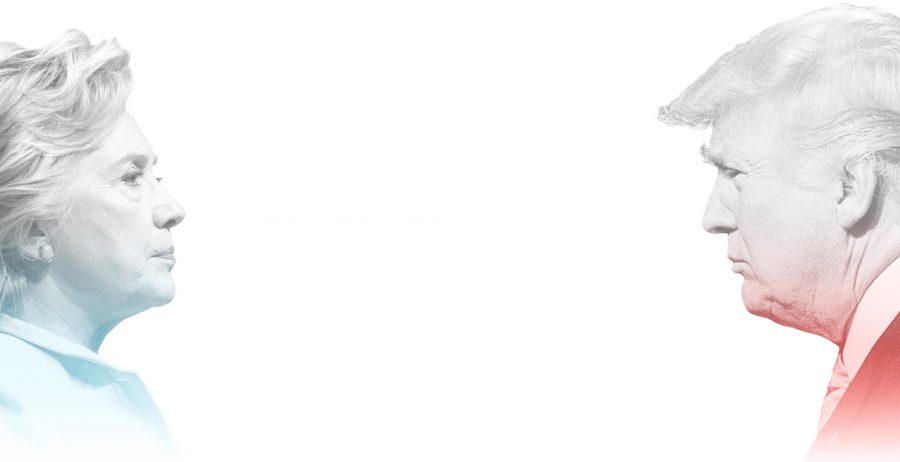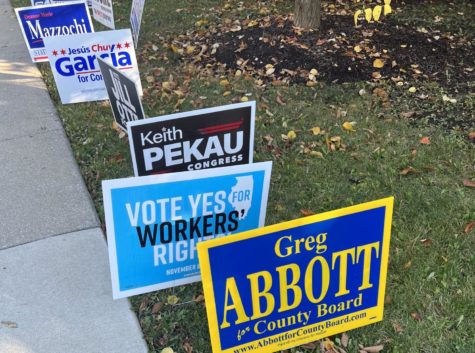Trump vs. Clinton Tax Policy
Photo courtesy of Wall Street Journal
Hillary Clinton and Donald Trump’s opposing tax policies is one of many pertinent issues in the upcoming election
In analyzing the tax policies of any two candidates’ run for president in our current two party system, there always seems that they have an opposite approach to taxation, and this election is far from an exception. The Clinton tax plan relies on raising taxes on the wealthy and leaving the middle class alone for the most part, while Trump’s plan intends to lower taxes at all levels of the income spectrum in an attempt to incentivize and increase spending. I’m here to tell you why Hillary Clinton’s plan is the stronger of the two.
Donald Trump’s tax plan relies on what is commonly called trickle down economics, which is essentially the idea that if you cut taxes, the spending as a result of these cuts will trickle down from the upper class to the lower, and increase growth. Now, this is 100 percent true…at first. Economic growth is inevitable when taxes are reduced. However, obviously when taxes are reduced the government is not getting as much money. In turn the debt of the U.S. would grow astronomically.
It’s projected that the U.S. debt would grow by $7.2 trillion over the next decade under Trump’s plan. Additionally after the initial growth-spurt for the economy, interest rates would grow in order to attempt to counteract the debt increase. They would grow “bigly.” After interest rates grow, economic growth would be inhibited due to a lowered incentive for spending. This inhibited growth would then lead to even higher interest rates, starting the cycle all over again until we end up in the Great Depression part 2 (I call it the Trumpression).
On the opposite side of the spectrum is Hillary Clinton’s tax plan. Her plan would do quite the opposite of Trump’s and would raise the taxes, however, contrary to what you have probably heard, really only for the rich. The middle class remains almost untouched in Clinton’s tax plan, and when they are effected negatively, the tax breaks that she is introducing would, for the most part, counteract the increase in middle class families’ rates.
On a national scale, Clinton’s plan would increase federal revenue by about $1.4 trillion in its first decade. This is because, though yes, growth would be stunted in the beginning of a Clinton presidency, interest rates would plummet and increase growth in the long term.
The majority of Americans would be affected very little by Clinton’s plan, and sometimes for the better, but with Trump’s, the wealthy are given a break and the rest of the population must suffer the consequences. To see how your family is affected by the tax plans of either candidate, see the calculator from the Tax Foundation below. Also, attempt to put some larger numbers in the income section and see why it is that the rich really prefer Trump’s plan, also keep in mind that, according to the U.S. Census Bureau, the median income for American households is $53,482, and in some cases, Trump’s plan actually increases the tax rate on these families.
Sources:
http://taxfoundation.org/blog/how-would-trump-and-clinton-tax-plans-affect-your-taxes
http://www.taxpolicycenter.org/publications/analysis-donald-trumps-revised-tax-plan
http://origin-nyi.thehill.com/policy/finance/301566-tax-policy-center-releases-dynamic-analyses-of-candidates-tax-plans
http://www.census.gov/search-results.html?q=average+income&search.x=0&search.y=0&search=submit&page=1&stateGeo=none&searchtype=web&cssp=SERP
How Would the Trump and Clinton Tax Plans Affect Your Taxes?
http://taxfoundation.org/blog/how-would-trump-and-clinton-tax-plans-affect-your-taxes

Zach Wols is a senior who is an A&E Editor. He loves to hang out with friends and play guitar. He hopes to major in journalism when he gets out of...












